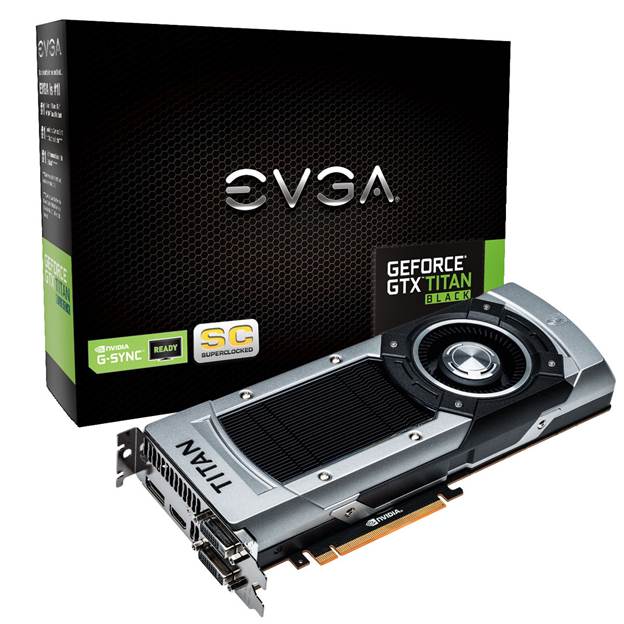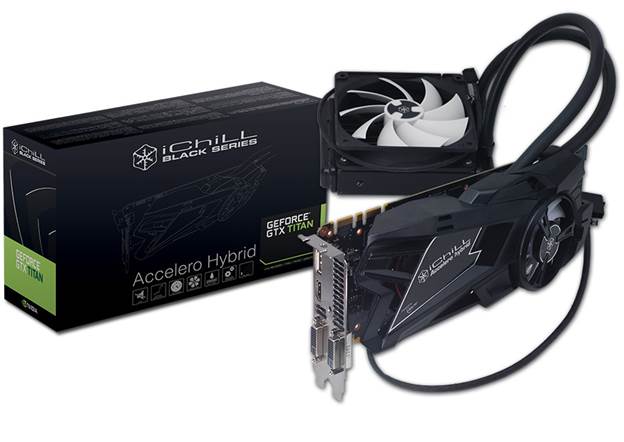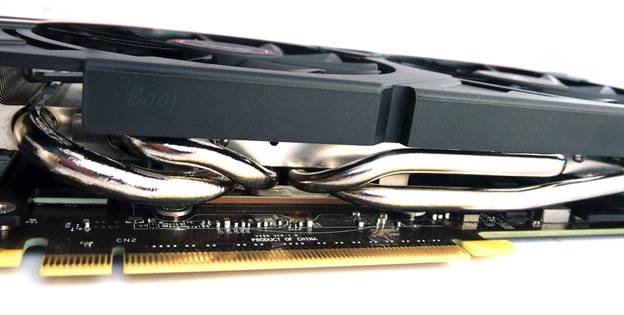One thousand, four hundred and ninety nine dollars. This
princely sum is the price of Gigabyte’s newest product based on NVIDIA’s
all-conquering GK110 GPU, the same chip that debuted a year ago in the original
GTX Titan. Costing more than an entire gaming PC, the new GeForce GTX Titan
Black is the PC equivalent of a Bugatti Veyron; stupidly fast with an insane
price tag. As any supercar owner will admit, you don’t buy something like this
if value for money is a concern. You buy a Titan Black because you can afford
the very best.

NVIDIA's GeForce
GTX Titan features 2,688 CUDA cores, 224 TMUs, 48 ROPs,
and a 384-bit wide GDDR5 memory interface, holding 6 GB of memory
With last month’s release of the GeForce GTX 750 Ti, NVIDIA
finally unveiled the Maxwell design that will replace the Kepler architecture
that beats in the heart of the Titan Black. As a result, the Titan Black could
be considered the swansong for Kepler, and NVIDIA hasn’t held anything back
this time around. It’s taken a year since the GK110 was first released, but
only now has NVIDIA enabled every feature of this powerful design. Whether or
not that means anything to gamers remains to be seen.
Milked To The Marrow
Smashing through frame-rates like a sledgehammer through
glass, the original Titan was more than a mere gaming product. As well as wiping
the floor with the competition when it came to games, it was an absolute
compute brute. A special setting in the NVIDIA control panel allowed the card
to be set to Double Precision mode, enabling compute performance that used to
cost upwards of $3000 in NVIDIA’s professional Tesla products. Titan used the
same GK110 GPU found in today's Titan Black, but it was only running on 14 of
its 15 SMX units, with the last likely disabled to increase the yield from the
factory. It was a truly impressive product with a similarly impressive $1500
price tag, but little did we know that we'd see the GK110 GPU used within
wheeled out three more times over the next year.

MSI GeForce GTX
TITAN BLACK pictured
To the dismay of many Titaneers, NVIDIA
released a compute-crippled version of the card just a few months later for
around $800, in the form of the GeForce GTX 780. Once again the GK110 was put
to work, but it had a further two SMX units disabled, purring on just 12, while
the total onboard memory was slashed by half, down from the Titan's hefty six
Gigabytes to three. Fast forward another six months and NVIDIA dusted off the
GK110 GPU once more, this time enabling all fifteen SMX units for the release
of the GTX 780 Ti, while keeping the memory down at three Gigabytes as well as
disabling compute performance once again. In the process the chip became known
as the GK110B, but NVIDIA didn’t really spell out what had changed, suggesting
these were simply primo chips.

A
better cooler means the GPU can sustain boost clocks that are higher, for
longer
It’s only now, in the form of the GTX Titan
Black, that NVIDIA has at long last delivered the GK110B with all the bells and
whistles. All fifteen SMX units are present and accounted for. All six
Gigabytes of onboard memory are ready and waiting, clocked at the maximum speed
of 7GHz. More importantly for number crunchers, the Titan Black also arrives
locked and loaded with full Double Precision mode enabled. NVIDIA has even
thrown a small speed bump into the mix, nudging up the Base clock to 889MHz
while the Boost clock increases to 980MHz.